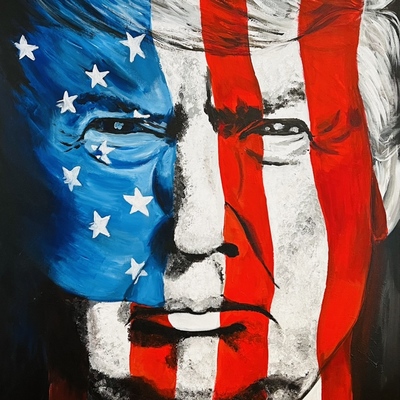Stay informed on the latest Truth Social posts from Donald Trump (@realDonaldTrump) without the doomscrolling. Consider it a public service for your mental health. (Why?)
- The United States will charge a 30% tariff on all Mexican products starting August 1, 2025.
- The tariffs are being imposed due to Mexico's failure to stop drug cartels and the flow of fentanyl into the United States.
- Cartels are attempting to turn North America into a 'Narco-Trafficking Playground'.
- Goods transshipped through Mexico to evade higher tariffs will be subject to the higher tariff.
- If Mexico decides to raise its tariffs, the US will add that increase to its 30% charge.
- Companies can avoid tariffs by building or manufacturing products within the United States.
- The flow of fentanyl is not the only challenge; unsustainable trade deficits are a major threat to the US economy and national security.
The imposition of a 30% tariff on all Mexican products would represent a major trade shock, significantly disrupting supply chains for numerous US companies that rely on Mexican imports or have manufacturing operations there. This would lead to increased costs for businesses and consumers, negatively impact corporate profits, and create widespread uncertainty. Sectors heavily reliant on cross-border trade with Mexico, such as automotive, agriculture, and manufacturing, would face severe adverse effects, leading to a substantial negative impact on the S&P 500.
The post details an impending imposition of a substantial 30% tariff on all Mexican products, citing national security concerns related to drug trafficking and trade deficits. Such a broad and significant tariff on a major neighboring trading partner carries a very high risk of escalating economic tensions, diplomatic friction, and potential retaliatory measures from Mexico. While not referencing military conflict, economic warfare can severely strain international relations and regional stability.
- Commodities: Gold (XAU) is highly likely to rise as a safe-haven asset due to elevated geopolitical and economic uncertainty. Oil (WTI) could see volatility, potentially declining on fears of a global economic slowdown stemming from trade disruptions, or rising if specific supply chains are impacted. Copper might fall due to concerns about reduced industrial demand.
- Currencies (Forex): The Mexican Peso (MXN) would face significant depreciation against the US Dollar (USD) due to the direct economic hit from tariffs. The US Dollar Index (DXY) could experience mixed pressures: an initial safe-haven bid followed by potential weakening if trade war concerns weigh on US economic growth expectations.
- Global Equities: All major global equity indices, including S&P 500, Nasdaq, STOXX 600, Nikkei 225, and Hang Seng, would likely decline. This would be driven by fears of global trade wars, disrupted supply chains, increased input costs, and a general decline in risk appetite. Companies with significant exposure to US-Mexico trade would be particularly vulnerable.
- Fixed Income (Bonds): US Treasury yields (10Y and 2Y) would likely fall as investors seek safety in government bonds, indicating a flight to quality. This could lead to a flattening or inversion of the yield curve. Credit spreads, especially for corporate bonds with exposure to international trade, would likely widen due to increased default risk concerns.
- Volatility / Derivatives: The Volatility Index (VIX) would be expected to spike sharply due to significant market uncertainty and increased risk aversion, reflecting heightened fear among investors. Options positioning would shift towards hedging against downside risks.
- Crypto / Digital Assets: Bitcoin (BTC) would likely behave as a risk-off asset in the initial flight to safety, potentially seeing an uptick, but its longer-term performance would depend on the broader macro liquidity environment and its correlation with traditional tech assets. Ethereum (ETH) and other altcoins would likely follow BTC's direction with potentially higher volatility.
- Cross-Asset Correlations and Systemic Risk: There would be a high likelihood of breakdowns in traditional cross-asset correlations, such as equities and bonds selling off simultaneously. Signs of liquidity stress or potential margin calls could emerge if market volatility is severe. Investors would be closely monitoring for any systemic risks.
- Retail Sentiment / Market Psychology: Retail sentiment would likely become highly fearful and uncertain. This could trigger a strong move into perceived safe-haven assets, or conversely, lead to highly speculative trading in distressed or meme-driven assets as some retail traders attempt to capitalize on volatility.

